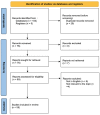Endometriosis and Adenomyosis: Modern Concepts of Their Clinical Outcomes, Treatment, and Management
- PMID: 39064036
- PMCID: PMC11277467
- DOI: 10.3390/jcm13143996
Endometriosis and Adenomyosis: Modern Concepts of Their Clinical Outcomes, Treatment, and Management
Abstract
Endometriosis and adenomyosis are complex gynecological conditions characterized by diverse clinical presentations, including superficial peritoneal endometriosis (SPE), ovarian endometrioma (OMA), and deep infiltrating endometriosis (DIE). The hallmark features of these pathologies involve the manifestation of pain symptoms and infertility, and approximately 30% of patients are asymptomatic. Despite ongoing research, definitive treatments for these conditions remain elusive, and clinical management primarily revolves around medical or surgical interventions. Recent advancements in our understanding of the efficacy of various treatment modalities, including medical therapy and surgical interventions, have provided clinicians with valuable insights into pain relief and fertility preservation. This review aims to provide an updated overview of the latest literature on clinical outcomes, treatment options, and management strategies for different types of endometriosis. By synthesizing the newest available data, this review seeks to inform clinicians and guide decision making based on factors such as patients' symptom severity, childbearing desire, and overall health.
Keywords: adenomyosis; deep infiltrating endometriosis; endometriosis; ovarian endometriosis; superficial peritoneal endometriosis.
Conflict of interest statement
The authors declare no conflicts of interest.
Figures
References
-
- Sanchez A.M., Viganò P., Somigliana E., Panina-Bordignon P., Vercellini P., Candiani M. The distinguishing cellular and molecular features of the endometriotic ovarian cyst: From pathophysiology to the potential endometrioma-mediated damage to the ovary. Hum. Reprod. Update. 2014;20:217–230. doi: 10.1093/humupd/dmt053. - DOI - PubMed
Publication types
LinkOut - more resources
Full Text Sources


